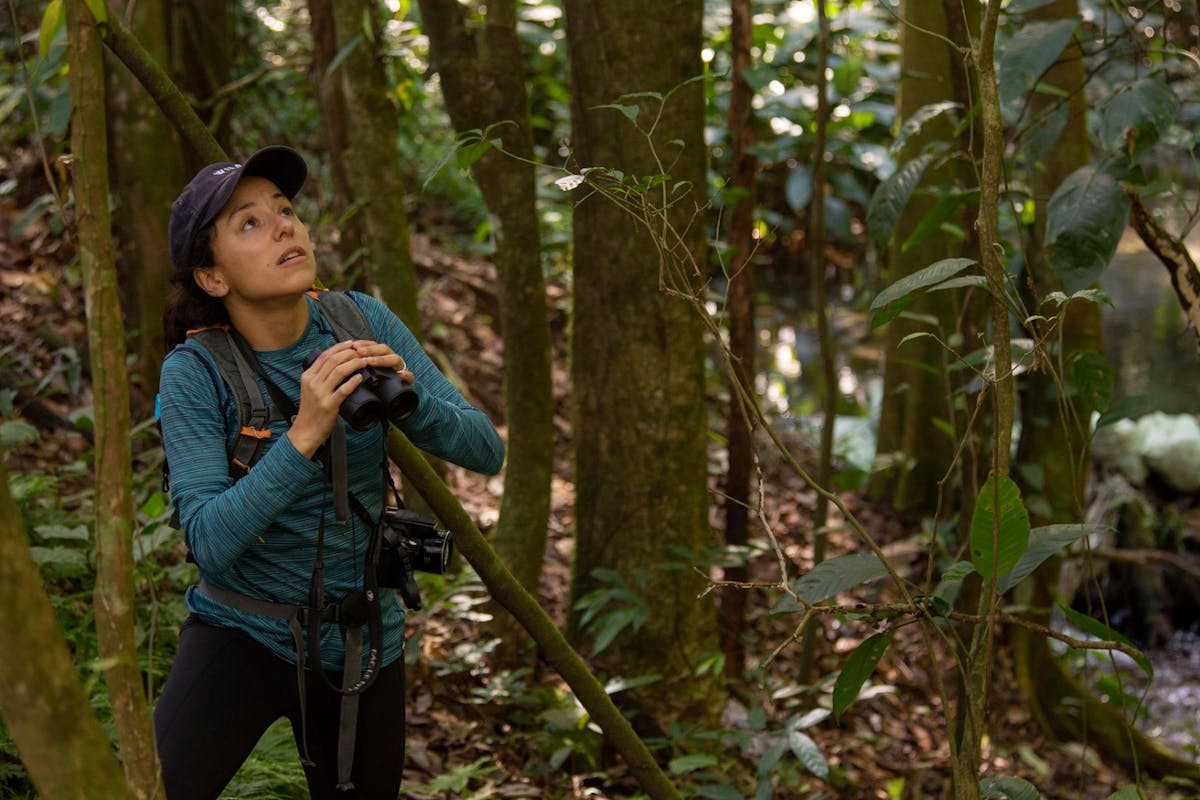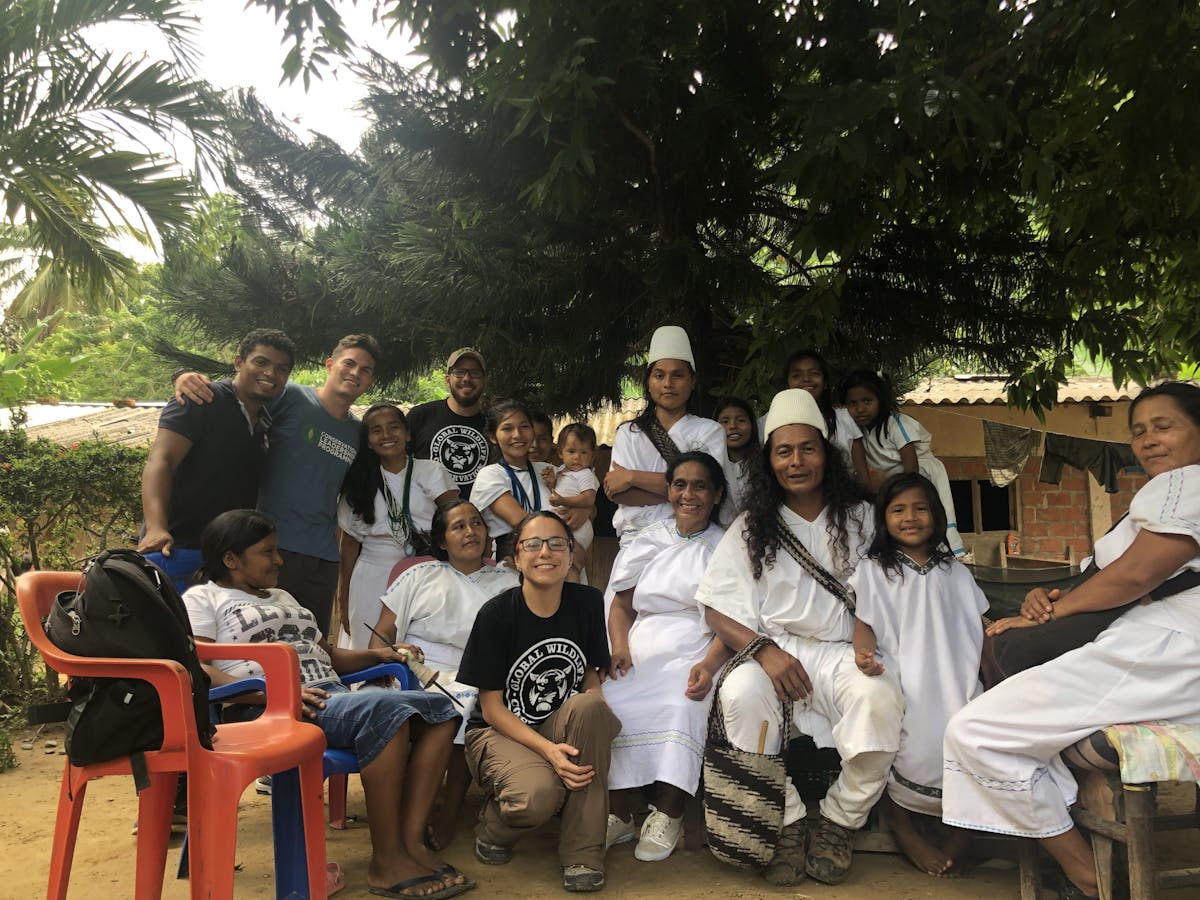Lina M. Valencia, PhD
Andean Countries Coordinator, Re:wild
“There’s so much diversity in the world—cultural, biological, linguistic. What I try to bring to the table is the diversity I have in my own life. Your position affects how you see the world and you have to be really open to the fact that how you see things is not how everyone sees things. As a conservationist, my goal is not to swoop in and tell others what to do, but rather bring together different voices, perspectives and opinions, and provide a platform for those already doing amazing work on the ground. to create alliances and to connect with people from different backgrounds and combine resources and expertise to find solutions to save the planet we live in.”
Dr. Lina Valencia was born and raised in Colombia, the third most biodiverse country in the world. She grew up with parents who took her hiking, camping and fishing. One of her early memories is of a trip to Gorgona National Natural Park, an island in the Pacific coast of Colombia that used to host a jail, but allowed her to see dolphins, Capuchin monkeys, poison dart frogs, corals, and Humpback Whale migration. In fact, a whale breached near them, almost capsizing their boat. Little Lina was fascinated. “Apparently I told my parents, ‘I want to study the ocean for the rest of my life’,” she said.
But, ultimately, it wasn’t the ocean that became her focus. On a biology field trip in college, she fell for primates after seeing an adult female squirrel monkey carrying an infant on her back. “I was mesmerized when I realized how closely related we were. I really wanted to understand how they behave, how they move and what they ate.”

But as she started studying primates, she also saw a different view of nature than—one that was in trouble. “That’s when I shifted from being a field biologist to being a conservationist, and from a conservation scientist to a conservation practitioner” she said. Lina found that being a conservationist required a perspective shift from field biology to one that centered on people. “Humans are not the enemy—they are the solution. It’s one of the most difficult parts of my job, and it’s not something they teach you in college,” she said. “You need to be a psychologist, a communications expert, a therapist, a social scientist...the most difficult part of my job is not chasing a spider monkey through the forest or drinking lukewarm water when its 100F outside for six months...working with humans is the most challenging but gratifying part of my job because once you are able to connect and understand and relate and learn from, you are able to change behaviors and make a positive impact on a place or species you are trying to save, as well as change positively the way you perceive the world.”
Lina’s advice to anyone interested in becoming a conservation practitioner, coming from a traditional academic setting, is to learn as much as possible from a diversity of disciplines such as economics, anthropology and political science.

Over the past few years, Lina has taken on amphibians, specifically harlequin toads. “I had to rewire my brain,” she said. She found that although there were several specialists working on protecting these “jewels of the forest,” there was little consensus on how to approach their conservation. True to Re:wild’s ethos, Lina played a convening role in getting the right people together around the most effective strategies. “Sometimes, we have to agree to disagree,” she said. “But we have the same goal: to ensure that harlequin toads survive in the long term.” And that goal is an important one, given that 80 percent of the 99 species of harlequin toads are threatened and 34 are lost to science. “Rather than work as isolated stars,” she said, “we need to work as a constellation.” And Lina carries this statement in every aspect of the work that she does, from establishing and improving management of protected areas, to supporting indigenous and community-based conservation efforts.
Lina credits her background—living between cultures and traveling the world—with a perspective that allows her to work with people and find solutions together. "In many conservation projects, we cannot find the solutions unless we first come to an agreement on what the problem is. The problem almost always has the solution.”
Wild Facts
Lina’s favorite harlequin toad is the Starry Night Harlequin Toad, which was lost to science until recently, though Indigenous communities knew it was there all along.
Lina lived in Colombia for 25 years before moving to the United States to start her Ph.D.
Lina has worked with genetics for more than seven years, exploring how genetic tools can contribute to the conservation of primates.
Lina has chased (and collected poop from) spider monkeys and tamarins in Colombia, Panama and Ecuador for over 10 years.
Lina has spent the last 5 years working with and learning from indigenous and Afro-descent communities in South and Central America in our efforts to save the forests they call home.
